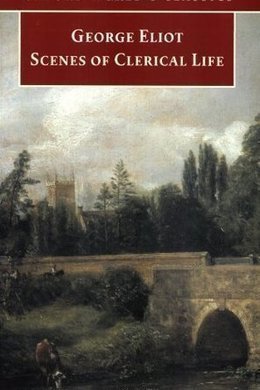
-
EPUB 486 KB
-
Kindle 596 KB
-
Support epubBooks by making a small $2.99 PayPal donation purchase.
Description
When Scenes of Clerical Life, George Eliot’s first novel, was published anonymously in Blackwood’s Edinburgh Magazine in 1857, it was immediately recognized, in the words of Saturday Review, as `the production of a peculiar and remarkable writer’. The first readers, including Dickens and Thackeray, were struck by its humorous irony, the truthfulness of its presentation of the lives of ordinary men and women, and its compassionate acceptance of human weakness. The three stories that make up the Scenes, The Sad Fortunes of the Reverend Amos Barton, Mr Gilfil’s Love Story, and Janet’s Repentance, foreshadow George Eliot’s major work, and their success gave her the confidence to become one of the greatest English novelists.
576 pages with a reading time of ~8.75 hours (144117 words), and first published in 1857. This DRM-Free edition published by epubBooks, 2014.
Community Reviews
There are currently no other reviews for this book.
Excerpt
Shepperton Church was a very different–looking building five–and–twenty years ago. To be sure, its substantial stone tower looks at you through its intelligent eye, the clock, with the friendly expression of former days; but in everything else what changes! Now there is a wide span of slated roof flanking the old steeple; the windows are tall and symmetrical; the outer doors are resplendent with oak–graining, the inner doors reverentially noiseless with a garment of red baize; and the walls, you are convinced, no lichen will ever again effect a settlement on—they are smooth and innutrient as the summit of the Rev. Amos Barton’s head, after ten years of baldness and supererogatory soap. Pass through the baize doors and you will see the nave filled with well–shaped benches, understood to be free seats; while in certain eligible corners, less directly under the fire of the clergyman’s eye, there are pews reserved for the Shepperton gentility. Ample galleries are supported on iron pillars, and in one of them stands the crowning glory, the very clasp or aigrette of Shepperton church–adornment—namely, an organ, not very much out of repair, on which a collector of small rents, differentiated by the force of circumstances into an organist, will accompany the alacrity of your departure after the blessing, by a sacred minuet or an easy ‘Gloria’. Immense improvement! says the well–regulated mind, which unintermittingly rejoices in the New Police, the Tithe Commutation Act, the penny–post, and all guarantees of human advancement, and has no moments when conservative–reforming intellect takes a nap, while imagination does a little Toryism by the sly, revelling in regret that dear, old, brown, crumbling, picturesque inefficiency is everywhere giving place to spick–and–span new–painted, new–varnished efficiency, which will yield endless diagrams, plans, elevations, and sections, but alas! no picture. Mine, I fear, is not a well–regulated mind: it has an occasional tenderness for old abuses; it lingers with a certain fondness over the days of nasal clerks and top–booted parsons, and has a sigh for the departed shades of vulgar errors. So it is not surprising that I recall with a fond sadness Shepperton Church as it was in the old days, with its outer coat of rough stucco, its red–tiled roof, its heterogeneous windows patched with desultory bits of painted glass, and its little flight of steps with their wooden rail running up the outer wall, and leading to the school–children’s gallery. Then inside, what dear old quaintnesses! which I began to look at with delight, even when I was so crude a members of the congregation, that my nurse found it necessary to provide for the reinforcement of my devotional patience by smuggling bread–and–butter into the sacred edifice. There was the chancel, guarded by two little cherubims looking uncomfortably squeezed between arch and wall, and adorned with the escutcheons of the Oldinport family, which showed me inexhaustible possibilities of meaning in their blood–red hands, their death’s–heads and cross–bones, their leopards’ paws, and Maltese crosses. There were inscriptions on the panels of the singing–gallery, telling of benefactions to the poor of Shepperton, with an involuted elegance of capitals and final flourishes, which my alphabetic erudition traced with ever–new delight. No benches in those days; but huge roomy pews, round which devout church–goers sat during ‘lessons’, trying to look anywhere else than into each other’s eyes. No low partitions allowing you, with a dreary absence of contrast and mystery, to see everything at all moments; but tall dark panels, under whose shadow I sank with a sense of retirement through the Litany, only to feel with more intensity my burst into the conspicuousness of public life when I was made to stand up on the seat during the psalms or the singing. And the singing was no mechanical affair of official routine; it had a drama. As the moment of psalmody approached, by some process to me as mysterious and untraceable as the opening of the flowers or the breaking–out of the stars, a slate appeared in front of the gallery, advertising in bold characters the psalm about to be sung, lest the sonorous announcement of the clerk should still leave the bucolic mind in doubt on that head.
